I’ll admit, this game is me showing my roots a little. In Indiana, where I’m from, or really most of the Midwest, any summer or fall gathering isn’t complete without a few rounds of cornhole (known by heathens as “bags” or “sack toss”). Drunk, sober, or somewhere in between, everyone has a good time chucking bags of corn at boards. Some people make their own set, some get them from a store (I won mine at an after-prom party, if that gives you any indication of the game’s popularity). It’s also a staple of football tailgating, especially at high school or college games. But because of the size of the game and the space it needs, it’s pretty much restricted to backyards, parking lots, or big indoor places. When the weather gets too cold, or just too wet (though that definition can and does vary), most people pack up the boards and stick ’em in the garage to gather dust until the first sign of summer comes in. But a new company in Illinois is trying to change thanks to their brand new game: DAGZ.
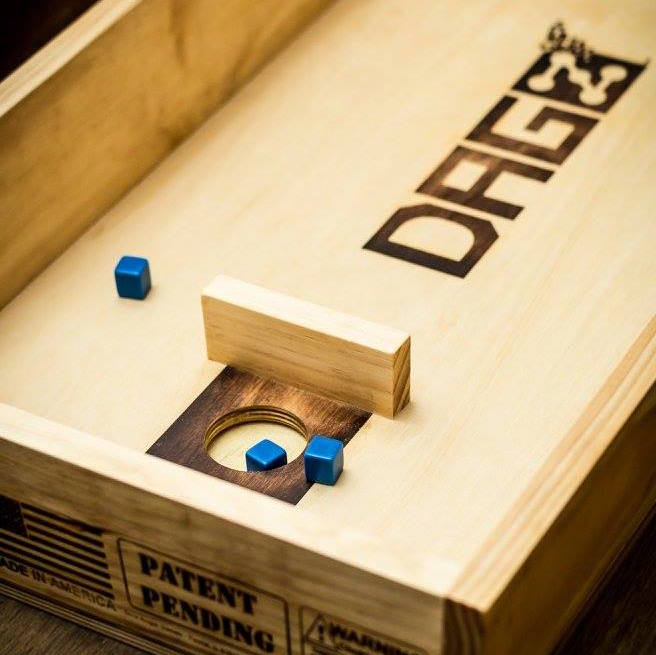
The company, Dice Angle Games (DAGZ is an acronym and play on the name of the game it’s based on), was founded in 2016 and centered around this game and this game alone. They created the game, according to their website, to be an “all season” alternative to games like horseshoes or cornhole (no I will not call it bags) while also taking up less space than darts or pool. Founder Chris Carroll says he “wanted something that encapsulated the social competitive aspect” of the outdoor games he loved, citing one too many weather-related incidents as a reason he wanted an indoor, portable game. The DAGZ website says that it’s meant to be “enticing those who enjoy games of entertainment, competition and aptitude.”
Dice Angle Games was nice enough to send me a copy of the Table Topper edition of the game, which is basically the “standard” version, and I used all my Hoosier cunning to take it to its limit.
What’s On The Table?
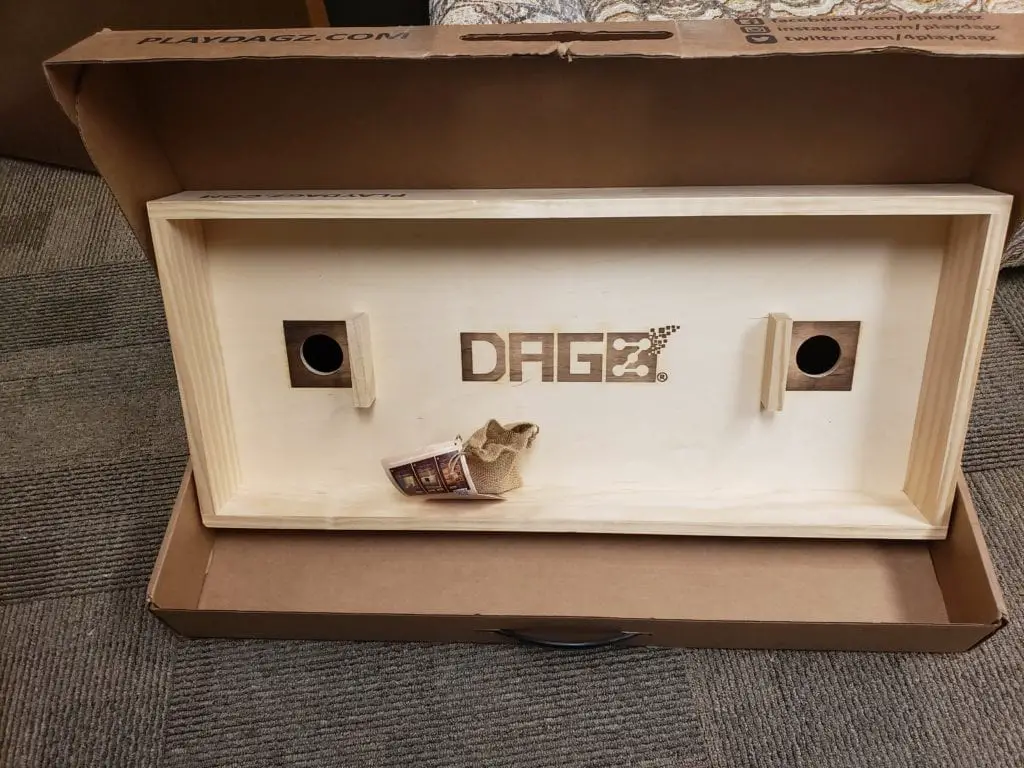
The first thing you’ll notice about the game is that it is damn sturdy. Proudly made and assembled in the USA, the “board” is basically a big slab of heavy duty plywood and some 2×4’s. It’s not rough or anything, and it looks really nice in a fun rustic sort of way, but it’s obvious that this thing can take a beating. Most of the detail like the logo, the scoring zones, and the info on the end is done with laser cutting that leaves that pleasing burnt look. It also comes in its own carrying case, a big box with a handle on it that makes it easy to transport.
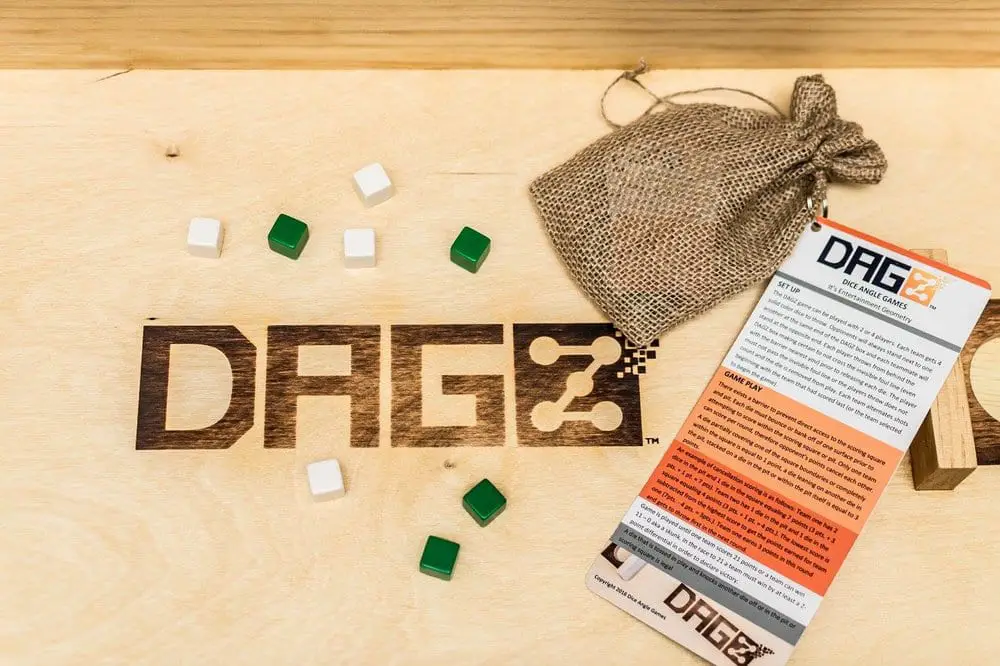
The dice are all really nice as well, feel good in the hand and easy to chuck. They’re a little lighter than I expected, and my first few throws sent the things careening off into space before I learned to dial it back a tad. The bag they come in is pretty hardcore burlap attached to laminated cards with the rules on them, which fit the game’s aesthetic while also being able to stand up to outdoor use. The whole shebang runs you $110, which is a bit steep but it is a big thing that’s built to last, so you’re getting your money’s worth.
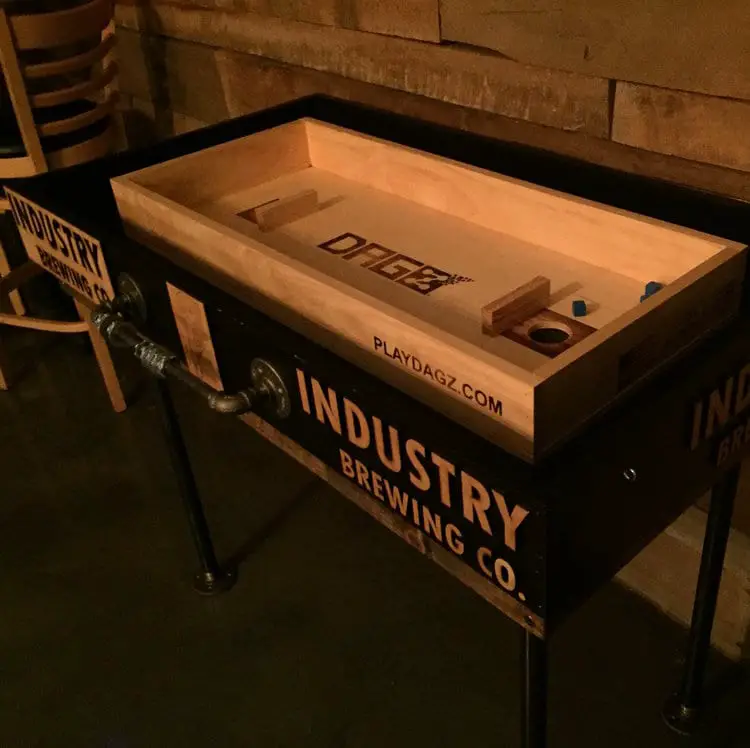
I’ll make a quick note here that, if you wanna be fancy, there’s a version of the game that sits in a foosball-esque table to allow for a more permanent and stable game. They even offer custom tables that can be laser etched and branded to whatever the customer would like. They’ve also got a DAGZ Mini for just two players that sits at half scale, making it perfect for kids or play on smaller surfaces.
How’s It Play?
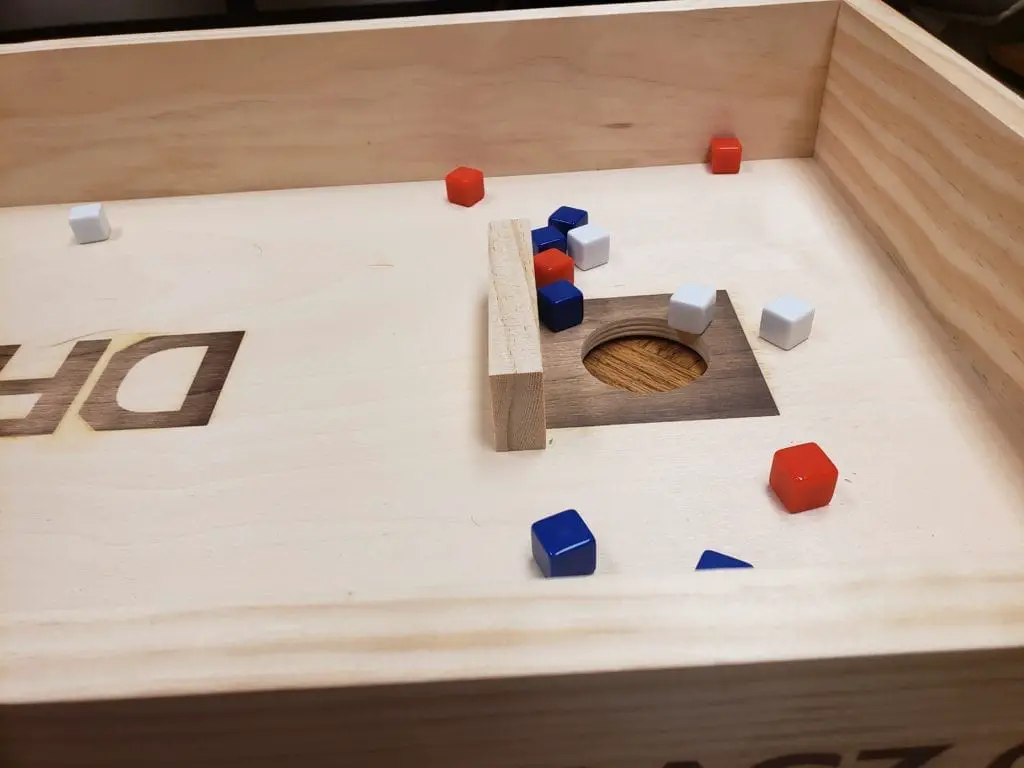
There’s not much to DAGZ. If you’ve played cornhole, you’ve played this game. You stand at each corner (or on opposite sides if you’re playing one-on-one) and huck dice at the other side to try to get it into the hole or at least within the little square behind the barrier. Players can’t go over the imaginary line marked by those barriers, and you can knock out the other team’s dice with your own. It’s three points in the hole and one point in the square, and each team’s score subtracts from the other i.e. if one team scores two and the other scores three, then the second team only scores one. It goes until a team scores twenty-one points (or goes 11-0).
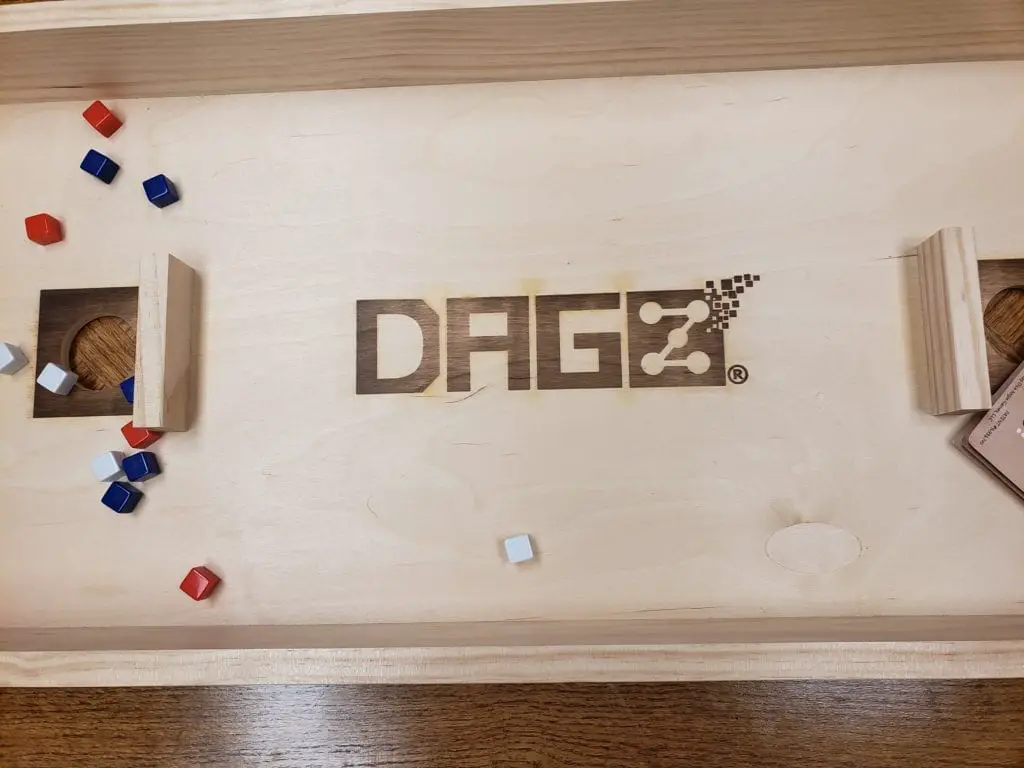
I love the portability of the game, and it sits really nice on lots of different surfaces. Like I said before, the dice take some getting used to. Once you get the hang of them, however, it’s actually really fun to see how you can physics them off the sides and back and into the pit to score. While the official rules want the pit to be as seen in the above photo, just deep enough to hold a few dice, it can be a bit of a problem getting dice in their in the first place. No matter how well you throw a die, it still bounces out of that pit super easily. I found that elevating the board, just enough to have space below the pits, could be a little less frustrating. But that’s just a house rule and just one way to play, so you do you.
The Verdict

I think this is the perfect game for anybody who loves cornhole, horseshoes, or any other outdoor game easily played with an adult beverage in one hand. The rules are incredibly easy and the game is just as fun as its bigger cousin. It plays a little differently, though, and I think some people will appreciate the more technical, finesse-based throwing of DAGZ over the dramatic lobbing of other games. It looks great as a permanent fixture on a table or as something you bring out for parties, which it’s absolutely ideal for. Anybody in a dorm or likes hosting parties will get a lot of enjoyment out of this. It’s definitely worth a pickup for your next tailgate, family gathering, or even New Year’s Eve party.
You can pick up the DAGZ Table Topper on their website, where you can also buy replacement dice in different colors like Wine Red or Kelly Green. And if you’re really itching to try the game out, you can play an app version on Android and iOS that doubles as an electronic rulebook.
[rwp_box id=”0″]
Thanks to Dice Angle Games for the chance to check the game out and for some of the photos. And keep an eye on The Fandomentals for all the latest in party-ready games and more!

